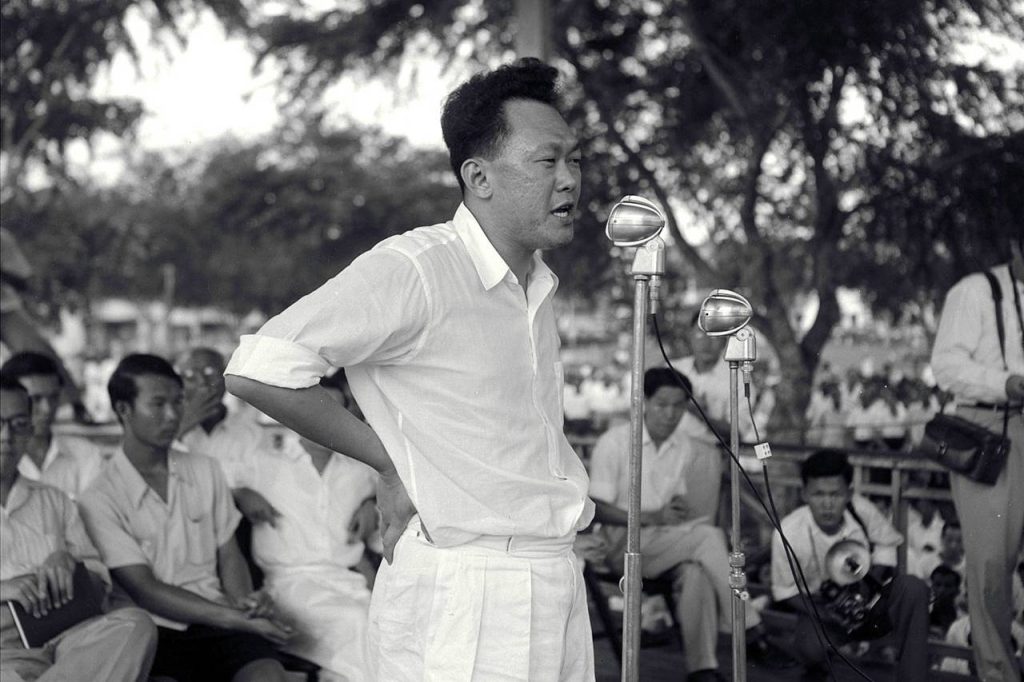Discover how Nigerian photographers can earn passive income by licensing their photos on Shutterstock, Adobe Stock, and Canva. Start earning today.
What if your photos could make you money while you sleep? Sounds like a scam, right? But it’s not; it’s called photo licensing and it might be the most underrated hustle in Nigeria’s photography scene right now.
Many Nigerian photographers hustle day and night shooting weddings, portraits, and events, yet leave a pile of great images gathering digital dust on hard drives. Those unused shots could be earning dollars on global stock platforms. Yes, dollars. In today’s economy, that’s music to anyone’s ears.
We’re talking about uploading your photos online for licensing – letting people pay to use your images in ads, websites, or magazines. It’s passive income: do the work once (take and upload the photo) and potentially get paid over and over.
In this article, we’ll break down how licensing works, why it’s a goldmine for Nigerian creatives, and compare platforms like Canva, Adobe Stock, and Shutterstock that can turn your photos into cash.
Wasted Shots or Hidden Gold? (Why Licensing Matters)
Every photographer has those shots: the random skyline, the bustling Lagos market scene, the cool portrait that the client didn’t pick. Instead of clogging your laptop, those images can become hidden gold. Photo licensing allows you to sell usage rights to your images, providing a steady stream of passive income. Unlike doing a client shoot (where you get paid once and done), licensing lets you keep ownership of your photo and earn from it multiple times.
Think of it this way: one photo, multiple clients. A single picture you took in 2019 could be bought by a travel blog today, an ad agency tomorrow, and a textbook publisher next year – all independent of each other. You earn each time. It’s the ultimate “work smarter, not harder” for photographers:
- Earn from Past Work: Pics sitting idle in your archives can start generating income without any extra shooting.
- Scalability: One good photo can be sold over and over to different buyers, so 1 photo = ₦ sales (in theory).
- Minimal Maintenance: Once you upload and tag your photos, they quietly earn in the background with little ongoing effort.
- Global Reach & Exposure: Your licensed photos might end up on a Kenyan travel site or a New York billboard. It’s pretty cool seeing your work out in the wild, and it can even bring you more direct clients.
For Nigerian photographers, there’s another big perk: earning in foreign currency. Most stock sites pay in USD (via PayPal or Payoneer). With the naira’s ups and downs, earning even a modest $100 monthly from stock can help pay bills or fund new gear. It’s essentially making your hobby (or profession) work double-time for you.
Why Aren’t More Nigerians Doing This?
If this is so great, why aren’t all the other Nigerian photographers on it? A few reasons:
- Lack of Awareness: A lot of folks simply haven’t heard much about stock photography as a revenue stream. It’s not talked about in our local photography forums as much as, say, booking clients or buying new lenses.
- Myths and Doubts: Some who do know assume “Ah, it’s peanuts – you only earn cents per photo.” Or they think the market is too saturated or only for “oyibo” content. While it’s true you won’t get rich overnight, those cents add up. And authentic African images are actually in demand; the world needs more diverse stock photos, not just the cliché Western scenes.
- Payment and Logistics: There’s the “How will I even get paid from Nigeria?” worry. But services like Payoneer make it easy – they’ll send your earnings straight to your Nigerian bank in dollars. Stock sites have contributors worldwide, so they’ve sorted out payouts (PayPal, Payoneer, Skrill, etc. are all options.
- Quality Fears: Some Nigerian photographers worry that their work isn’t “stock-worthy.” True, agencies have standards: they don’t want blurry, noisy images. But if you’re a halfway decent shooter (which you likely are if you’re reading this), you can get accepted. And you’ll learn quickly what sells and what doesn’t.
Bottom line: the barrier to entry is lower than you think, and the potential rewards – even modest ones – are totally worth it for a side hustle.
What Exactly Is Photo Licensing (And How Does It Work)?
Photo licensing in plain terms is renting out your photo. A client pays a fee to use your image under certain conditions. You’re not handing over your camera memory card; you’re just giving legal permission to use a copy of the photo. You still own the image.
Here’s a quick rundown:
- Stock Agencies: Websites like Shutterstock, Adobe Stock, Freepik, Pexels and formerly Canva (we’ll get to that) host your images on their marketplace. Think of these sites as giant online photo malls where buyers shop.
- Buyers: Could be anyone; a blogger, a multinational company, a textbook publisher, searching the library for an image that fits their need.
- License Types: Most stock sites offer royalty-free licenses. Despite the name, you do get royalties – “royalty-free” just means buyers pay once and can use the image multiple times (non-exclusively). There are also rights-managed and exclusive licenses, but as a beginner you don’t need to sweat that. Royalty-free on big platforms is the standard passive model.
- You Get Paid: Each time someone licenses (downloads/buys) your photo, you get a cut. The site keeps a portion, you get the rest. Payout can be a fixed amount or percentage, which varies by platform.
For example, if someone buys a license to your photo on a site for $10, you might get say $3.30 (if the commission is 33%). Some sites pay per download as low as ~$0.25 on subscription plans. It sounds small, but imagine 100 downloads of different images – that’s $25 you didn’t have before, for work you already did.
Important Note: You can upload the same photo to multiple platforms (unless you sign an exclusive deal with a site, which most people don’t do initially). Non-exclusive licensing means your Lagos sunset pic can be earning on Shutterstock, Adobe, 500px, etc. simultaneously. And the more exposure your work gets, the more potential sales.
Meet the Platforms: Canva vs. Adobe Stock vs. Shutterstock
So, where do you start? There are dozens of stock libraries available ranging from big names to niche players. To keep it simple, let’s look at three popular avenues, how they compare, and the pros/cons for each. Each platform has its own vibe and model for contributors (that’s you, the photographer supplying images).
1. Shutterstock – The Volume King of Microstock
Shutterstock is one of the most famous stock marketplaces and often the first stop for beginners. It’s known as a “microstock” site – meaning it sells images cheap in high volume. Think of it as the Amazon of stock photos.
- Ease of Entry: You sign up on the Shutterstock Contributor website (free). Typically, new contributors submit some sample images for quality check. (In the past, it was 10 samples and you needed 7 approved to get in; if you fail, you can try again after some time). The review is to ensure your photos meet basic technical standards (focus, lighting, no big copyright issues). Once you’re in, you can upload as much as you want.
- Payout Rates: Shutterstock uses a tiered commission system. You earn between 15% and 40% of the license price for each image download. New contributors start on the low end (~15%). As your total downloads accumulate over time, your percentage increases (it resets annually, so you climb again each year). In practice, a lot of Shutterstock downloads for a newbie might earn around $0.10 – $0.25 each (on subscriber plans), and a few dollars if it’s an on-demand single purchase. It doesn’t sound like much, but top contributors have thousands of images that collectively get lots of downloads.
- Pros: Massive buyer base (Shutterstock has paid out over $1 billion to contributors in 15 years – huge market). Even niche content can find a buyer. You also get a nice portfolio page to show off. Many stock shooters say a big chunk of their income comes from Shutterstock because of the volume of sales.
- Cons: The earnings per download are low. It’s a quantity game; you likely need hundreds of images online to see significant income. Also, competition is fierce; there are millions of photos already, so yours need to stand out (either by quality or by covering subjects that aren’t overdone). Payout threshold is $35, and they pay via PayPal, Payoneer, etc. so you need to accumulate that much to cash out.
Tip: Focus on local content that’s underrepresented. A photo of Zuma Rock or Makoko water settlement (by Nigerian photographers) might have way fewer competing images than, say, the Eiffel Tower. Less competition = higher chance your photo gets found and bought. Leverage your unique access to Nigerian scenes and culture.
2. Adobe Stock – High Quality, Steady Royalties
Adobe Stock is the stock service by Adobe (the folks behind Photoshop, Lightroom, etc.). It’s a bit newer to the game (launched mid-2010s) but has grown quickly by integrating into Adobe software used by millions of creatives.
- Ease of Entry: If you have an Adobe ID, you’re halfway there. Becoming a contributor is straightforward: you can even upload directly from Lightroom or Bridge after editing. There’s still a review process for each image, but no big initial test like Shutterstock’s. If your photos are decent resolution and quality, they’ll likely get accepted.
- Payout Rates: Adobe Stock pays a flat 33% royalty on photos (35% on videos). This is nice and simple – about one-third of whatever the customer paid for the license. In many cases, that works out to around $0.33 for a standard subscription download (since Adobe’s subscription roughly values each standard image at $1), or more if it’s a credit-pack or on-demand purchase.
So, the per-sale earning can be a tad higher than Shutterstock’s lowest tier. Adobe also sometimes gives bonus incentives (e.g. free Creative Cloud subscription for contributors who hit certain milestones).
- Pros: Integrated user base; designers using Adobe products can find your images easily while they work. That means a lot of professional creatives (marketing agencies, etc.) use Adobe Stock. The 33% royalty is relatively fair in microstock land. Also, content quality on Adobe Stock is generally high, so buyers looking for quality might browse there (good for Nigerian photographers who pride themselves on top-notch shots).
- Cons: The library is still huge (though smaller than Shutterstock’s), so you have competition. Adobe Stock might not generate as many downloads as Shutterstock for a new contributor, according to some contributors’ reports, but each sale might pay a bit more on average. It’s not exclusive, so you can cross-post images that are on Shutterstock too. Payout threshold is $25, and they pay via PayPal, Payoneer, etc., which is convenient.
One cool thing: if you’re already using Lightroom to edit your photos, you can export and upload to Adobe Stock in one go. It streamlines the workflow of “shoot → edit → upload → earn.” So, for someone already dealing with the editing hassle, adding the extra step of uploading to stock is not a big deal.
3. Canva – The Trendy Underdog (Huge Audience, But With a Catch)
Canva isn’t a traditional stock photo site like the others. It’s a graphic design platform loved by marketers, content creators, and pretty much everyone making social media posts or flyers. Canva itself needs content (photos, graphics, etc.) for its users to incorporate into designs. That’s where contributors came in: photographers could provide images for Canva’s library and earn when those images were used.
- Ease of Entry: Historically, Canva had a contributor program you could apply to. You’d submit a portfolio and, once approved, you could upload images, just like other stock sites. Many beginners got in and started earning modestly.
However; as of 2025, Canva paused new sign-ups for their contributor program. It got so popular that they temporarily closed it (likely to focus on their existing contributors and content). They may reopen in the future, but at the time of writing, new photographers have to wait or look at other platforms. You can still get your work on Canva though, if you sign up for the Creator’s Program*, which lets you design templates and elements for Canva’s library.
- Payout Rates: Canva’s model was a bit different. They sold one-time licenses and also had subscriptions. The royalty was roughly 35% of the license price. For example, if a Canva user without a subscription buys your photo for $1, you get $0.35. If a user with a Pro subscription uses your photo, you get a small cut of the subscription pool; often around ~$0.10-0.20 per use, depending on overall downloads (it works out to about the same range in percentage).
Multi-use licenses and extended licenses could net more ($3.50 or $35 for you, respectively, in some cases). In short, ~35% royalty on whatever type of sale.
- Pros: Massive user base. Canva reports over 65 million users worldwide designing with the tool. That’s an enormous audience potentially using your photos in their designs. Many of those users aren’t traditional stock photo buyers – they’re small business owners, students, etc., who might not go to Shutterstock, but they are on Canva. So this way, Nigerian photographers can reach a whole new segment of customers. Contributors have noted that their images can get thousands of uses (especially simple backgrounds, trendy lifestyle shots, etc.) adding up lots of tiny royalties. Canva also has a clean interface and fairly transparent licensing terms, which contributors appreciated.
- Cons: The big one: you currently can’t join until they reopen sign-ups. 😢 So this is an opportunity that hopefully will be available again. (They’ve hinted that you should “check back later,” so keep an eye out). Also, the earnings per use are small, as mentioned. You truly need volume, hundreds of downloads, to see significant money on Canva. The upside is those downloads can happen quickly if your work resonates with that huge user base.
*Note: Canva has shifted focus to a “Canva Creator” program for templates and designs. Photographers may eventually be able to access this route or when contributor intake resumes. In the meantime, you can still leverage other platforms right now.
Other Notable Mentions
While our focus is on the big three above, be aware there are other players:
- iStock/Getty Images: Getty is high-end, iStock is their microstock arm. Getty can have higher payouts per sale but is tougher to get into and not really beginner-friendly. iStock pays low (similar to Shutterstock) and has complex exclusivity options.
- Alamy: More editorial and diverse content, pays ~50% on sales (great commission) but each photo might sell rarely. Good for certain niches like newsy or travel imagery.
- 500px: A photography community that also licenses photos. They even offer up to 100% royalties for exclusive photos in certain membership plans. Could be interesting if you want community + sales, but 500px’s market share is smaller.
- Freepik, Dreamstime, Pond5 (for video), etc.: There are many sites. Each with its own quirks. As you get comfortable, you can expand to multiple platforms to increase your reach.
Start with one or two of the big ones, upload a bunch, then branch out. The good news is non-exclusivity means one great shot of Lagos traffic can live on 5 websites at once, increasing chances of a sale.
Making It Work: Tips to Succeed in Stock Photography
Now that you know where to go, let’s talk strategy. To actually make this worth your time, follow these tips (learned from stock veterans and personal experience):
- Know What Sells (and What Doesn’t): Generally, images with people do well (especially showing real emotions, tasks, or culture) – but you’ll need model releases for recognizable people. If that’s a hassle, focus on scenes, objects, and landscapes.
Authenticity is king now; candid-looking shots can outperform obviously staged ones. Also, think of topics: business and technology, food, travel, education, and cultural/traditional themes. A beautifully composed photo of a local festival can fill a gap in the market.
- Quality over Quantity (to a point): You don’t need a $5,000 camera, but whatever you use, make sure the images are high resolution, in focus, and well lit. Stock sites will reject images with too much noise, blur, or artifacts. So that experimental grainy low-light shot might not pass; save that for Instagram, not stock. That said, once quality is met, quantity does matter for earnings. Set a goal to upload maybe 5-10 good photos a week. Consistency can build a sizable portfolio over months.
- Keyword Like Your Rent Depends on It: Keywords are how people find your photos. If you upload a shot of Lagos Third Mainland Bridge at sunset, use relevant keywords and plenty of them: Lagos, Third Mainland Bridge, Nigeria, West Africa, sunset, skyline, traffic, cityscape, etc. Think like a buyer: what would someone search to find that image? Include locale and concept words. Don’t spam irrelevant tags (the sites hate that), but do be thorough. This directly impacts your photo’s visibility.
- Be Patient and Persistent: Passive income is a slow burner. You might upload 50 photos and hear crickets for a month. Then suddenly one image sells and you make $0.50. Don’t be discouraged; that’s $0.50 more than you had, and it might sell again. It can take a year or more to build up a serious side income. But each batch of uploads is like planting seeds for future harvest.
- Stay Informed & Adapt: Trends in stock content change. Maybe one year, photos of people wearing face masks are hot (I wonder why [sic]), another year it’s all about remote work setups. Pay attention to global and local trends. Also watch your own sales: if half of your earnings are coming from food photos and hardly any from landscapes, maybe focus more on food shots; clearly the market has spoken about what it likes from you.
- Legal Stuff: As mentioned, get model releases if people’s faces are visible. If you shoot recognizable private property or trademarks (e.g. a big company’s logo in the shot), those might get rejected unless you have property releases or categorize them as “editorial use only” on sites that allow editorial content. Each platform has guidelines; give them a read so you don’t waste time uploading something that won’t be accepted.
One more thing to note: free stock platforms vs. paid. Most Nigerian photographers might have heard of Pexels, Pixabay, Unsplash; they allow free downloads and don’t pay contributors (except maybe via donations). Those are great for exposure, but since we’re talking income, stick to the paying sites. Some photographers do use free sites to get their name out there, but you’ll have to decide if that’s worth it. On paid sites, even a small sale is cash in your pocket.
Is It Worth It?
You’re not going to finance your next car purely through stock photo earnings (well, unless you go really hard at it). But as a supplemental income, it’s certainly worth it.
Some people even treat stock as a serious part of their business. But even as a casual earner, it’s pretty satisfying to know that a random picture you took at Landmark Beach (of blessed memory) three years ago is now paying for your Netflix subscription today.
Ready to Give It a Shot?
The key is to start. Pick a platform (or two) and take the first step – sign up, upload 10 of your best photos as a test, and see what happens. The process costs you nothing but a bit of time, and the upside is that thrilling moment when you earn your first dollar online.
Remember, the stock photography game rewards the long haul: the more you upload (quality stuff), the more lottery tickets you have in play. And this lottery actually pays you back regularly, not just one jackpot. Even if it’s small amounts, over time it can become a nice passive income stream that supports your main hustle.
So, (Nigerian) photographers, don’t let this opportunity pass you by. The world is hungry for images – your images, your stories, your perspective.
Ready to make your money work as hard as you do? Subscribe to the SimplVest newsletter for more savvy insights on building passive income streams and smart investments.
Don’t miss out – sign up now and get the latest tips straight to your inbox!












